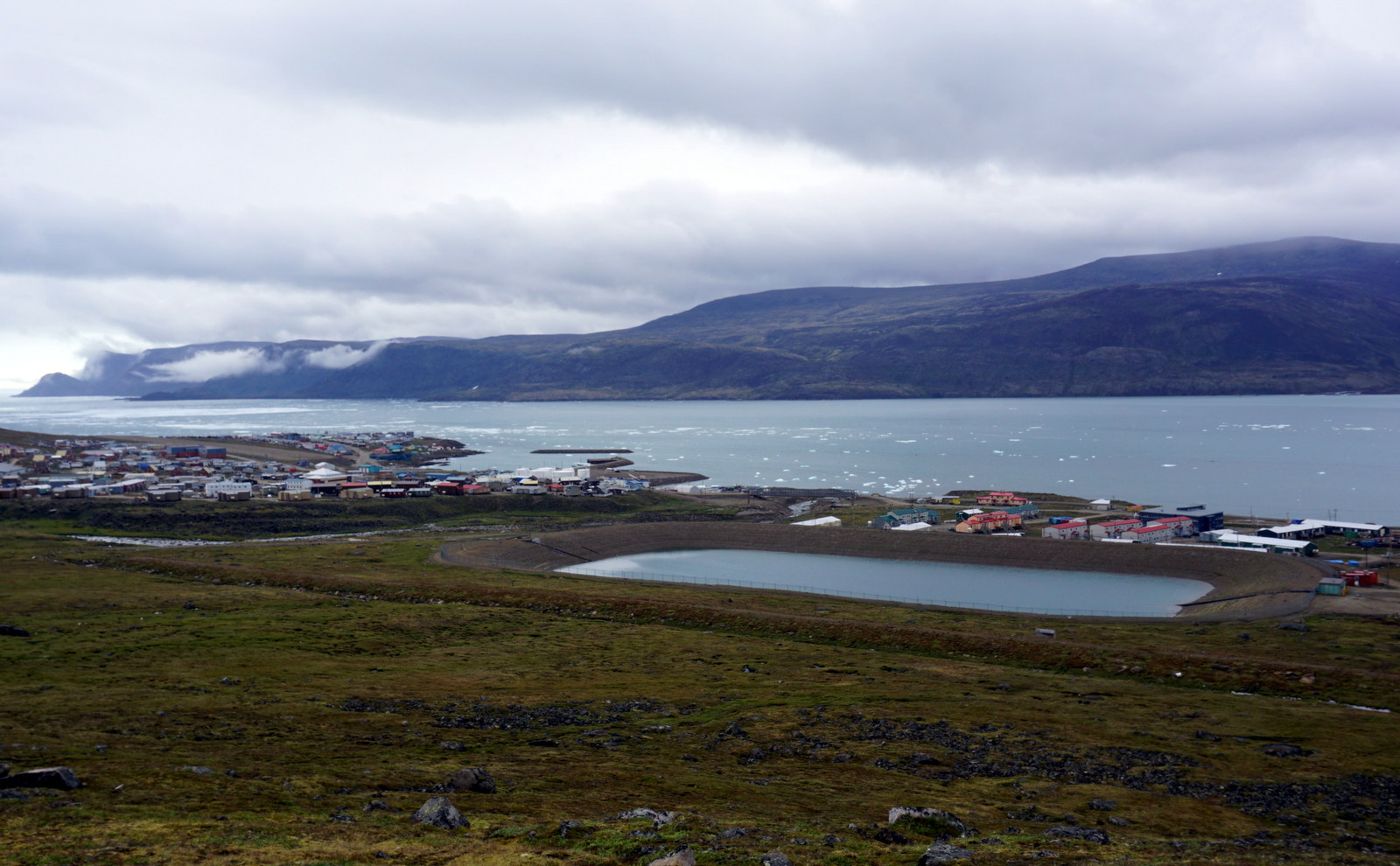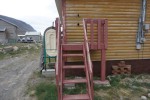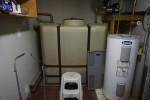Being that my background is in water resource engineering and water management I have paid special attention to water while I have been in Pangnirtung. I have been working on a drainage assessment for the community and been lucky enough to help out on some drainage projects that have arisen during my time here. One thing I have become especially fascinated with is how the drinking water delivery and wastewater services operate here in Pangnirtung.
Common methods of drinking water and wastewater delivery that are used in more temperate regions are not suitable in many arctic and subarctic communities such as Pangnirtung (Daley, Castleden et al. 2015) Permafrost and extremely cold temperatures for long periods of the year render underground piped water systems, which are used to distribute water to homes and buildings in the majority of urban areas of southern Canada, unsuitable in these regions (DW 1996). Individual water wells and buried septic systems, which are common in rural areas in southern Canada, are also unusable in many of these regions due to the permafrost (DW 1996). With underground systems unusable many arctic and subarctic communities, such as Pangnirtung, rely on trucked water delivery to deliver water to dwellings and businesses within communities (Daley, Castleden et al. 2015).
The community of Pangnirtung is located along a narrow stretch of coastal plain in the Pangnirtung Fjord of off Cumberland Sound on Eastern Baffin Island (Spinney and Pennesi 2013). The communities sole source of water is the Duval River which is a glacier fed river originating in two lakes in the mountains above town (Spinney and Pennesi 2013). The river runs down off the mountains and right through the community emptying into Pangnirtung Fjord and dividing the community in two. The Duval River does not flow during the winter months so a reservoir was constructed to store water from the river during the winter months (Trepanier 2015). During the summer months water is pumped from the Duval River into the water reservoir so water it is available throughout the entire year (Trepanier 2015).
- Duval River running through town
- Pump at the river
- Piping leading to the reservoir
- Reservoir
The water in the reservoir is treated with chlorine to remove any microbial contaminants and then transferred into the water delivery trucks(Daley, Castleden et al. 2014). The trucks then deliver water directly to homes through a pipe in the side of every building. In a fairly simple process the driver pulls the truck up to the house, connects the water hose with a specialized nozzle and fills the water tank with an overflow valve letting the driver know when the tank is full.
- Reservoir
- Water truck filling up
- Pipes in the side of a house
- Water tank in a house
The water is used by the dwelling and then stored in a wastewater container which is usually located under the house. Specially designed wastewater trucks come and pump out the wastewater to remove it from the dwellings. Pangnirtung is located in a fjord and space is relatively limited around the community as mountains surround the town (Spinney and Pennesi 2013). This means that space for treatment of wastewater in sewage lagoons or treatment wetlands is not available in Pangnirtung. To overcome this a state of the art wastewater treatment plant was constructed in Pangnirtung which treats wastewater created by Pangnirtung residents (Trepanier 2015). The construction of the plant was a multiyear process that involved many different government agencies, private contractors and community members (Trepanier 2015). It resulted in one of the highest rated wastewater treatment plants in Northern Canada (Trepanier 2015).
- Sewage Truck
- Wastewater Treatment Plant
Water delivery and wastewater trucks operate 7 days a week in Pangnirtung and the hamlet staff work very hard to ensure all the people of Pangnirtung have water and have room in their wastewater tanks. From a more personal note I thought that being able to see how much water you have, and more importantly how much water you use was really interesting. If we were low on water sometimes you had to postpone a shower or do laundry on another day and I thought it was a great reminder that the water we get in our homes is not an inexhaustible resource and that there is a lot of work that goes into drinking water and wastewater delivery services.
References
Daley, K., et al. (2014). “Municipal water quantities and health in Nunavut households: an exploratory case study in Coral Harbour, Nunavut, Canada.” Int J Circumpolar Health 73.
Daley, K., et al. (2015). “Water systems, sanitation, and public health risks in remote communities: Inuit resident perspectives from the Canadian Arctic.” Social science & medicine (1982) 135: 124-132.
DW, S. (1996). “Cold regions utilities monograph. 2nd ed.” American Society of Civil Engineers: pp. 1.1–1.6.
Spinney, J. A. and K. E. Pennesi (2013). “When the river started underneath the land: Social constructions of a ‘severe’ weather event in Pangnirtung, Nunavut, Canada.” Polar Rec. Polar Record 49(4): 362-372.
Trepanier, S. (2015). Water Delivery Discussion, Hamlet of Pangnirtung.













Interesting info on the methods used to operate the delivery of water and disposal of waste water in this community Matt!
LikeLike
What an experience! Great read… I like that you included some background research. Thank you!
LikeLiked by 1 person
I grew up in Fort Simpson NT. I enjoyed this article – the delivery system for the houses not on municiple water was the same. It made us accountable for our water use. I now live in the Okanagan which is on a stage 4 drought. Ease of use, or easy access of our resources sometimes will lead to misuse or just not having the thought process to care for the earth. Thanks for the informative article.
LikeLiked by 1 person